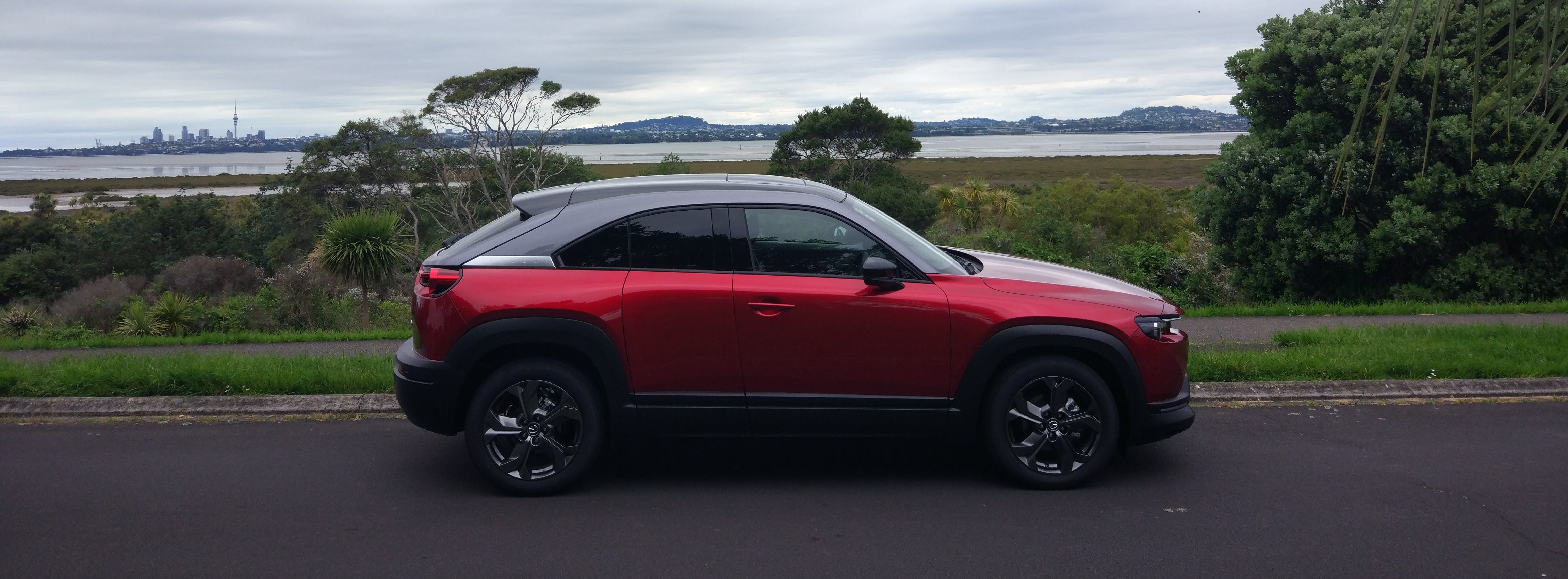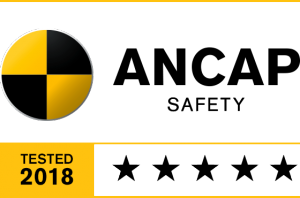
Mazda MX-30 M Hybrid Limited 2021
Mazda recently introduced NZ to its new Hybrid vehicle - the MX-30 M! Find out what we thought here.
09 August 2021
It’s not every day you get given a Battery Electric Vehicle (BEV) to review over an extended period of time, giving us the opportunity to test the range with everyday commuting from a full charge.

The Kona Electric is now available in two battery sizes (39kWh or 64kWh) with a WLTP claimed range of 305km and 484km respectively. The difference between the two base models sits at around $10,000, which works out around $55 per kilometre of extra range. The larger of the two would sit in a class of long-range BEVs, alongside cars from the likes of Tesla, Kia and Mercedes-Benz.
So what’s new?
The vehicle we reviewed was the revised 64kWh base model Kona Electric in standard trim. One of the notable changes for 2021 is the switch to Michelin Primacy4 tyres, which largely contributes to a 7.8 per cent increase in maximum achievable driving distance on a full charge (previously it was 449km).
The exterior has seen a minor facelift with a new closed front grille, new LED daytime running lights (DRLs), and a point of contention - the asymmetrical charging port, which you might either love or loathe depending on your level of OCD, but it’s designed to make a point of being an EV as opposed to just looking like a regular grille (which the lack of radiator venting sort of achieves regardless).
New sharper headlights stretch themselves around the side of the car and are connected to the painted wheel arch claddings, adding a look of sophistication, with the rear bumper sporting a fresh look and rear lamps that have been lengthened horizontally.
The interior has received a few small changes, such as the welcomed addition of a rear passenger USB charging port and the passenger seat gaining a height adjuster.
The 10.25-inch colour TFT LCD Supervision dash cluster features a fully digital display and projects a modern aesthetic for the cabin. A variety of different user-selectable themes are available, and can also be linked to the selected Drive Mode. The cluster also displays a range of trip computer information, as well as system status and visual alerts from the various safety systems.
Sensible safety
The standard fitment Hyundai SmartSense™ advanced driver assist system receives an upgrade and now incorporates Blind-Spot Collision-Avoidance Assist, Rear Cross-Traffic Collision Avoidance Alert, Lane Following Assist, Rear Exit Warning and Rear Occupant Alert, which reminds you to look in the back seat just in case you forget you brought a small child with you.
The Kona Electric received a five-star ANCAP rating back in 2017.
The Kona Electric now features remote start capability via the smart key fob. With the handbrake engaged and vehicle locked, the user is able to remotely start the vehicle by pressing the lock button, followed by pressing and holding the engine start button.
The top-spec Elite model now adds heating to the rear seats, a Harmon Kardon audio system, ambient lighting and a wireless charging pad to the already impressive package.
Our real world range test
We had the opportunity to review the Kona Electric twice for just under two weeks at a time, giving us the chance to see just how far we could travel before recharging. Hyundai were interested in the outcome of our range test, and to see if we could travel 500km whilst driving as normal as we could. We drove the daily work commute from West Auckland into the CBD (a 35km round trip), and on the weekends we were out and about driving, too.
Unfortunately, the weather elements are an enemy of battery range testing, and we had torrential rain and stormy weather during our first fortnight with the car, and icy cold temperatures for our second, with some extra frosty mornings thrown in the mix. Needless to say, we didn’t achieve our target range - 450km was achieved with the first drive, and 407km the next, with over 12 hours of driving time taken to achieve this.
Both results we felt were expected due to the weather conditions, which demonstrates that unfavourable weather conditions do have an impact on achieving desired range. We are confident that should the weather conditions have been normal that 500km could have been easily achieved.
The drive experience at very low range was quite interesting. There are a few different warning screens displayed as the range drops, eventually turning into a picture of a snail on the display and the empty gauge stopped reading altogether, fortunately, the infotainment screen had a battery meter reading on it. By the time we reached the West Auckland Vector charge station, we had 1 per cent battery life and just 4km range remaining. Talk about range anxiety!
Little did we know that the charger we arrived at was not a fast one, supplying just 7.2kWh of power. After an hour of browsing the nearby shops, 32km of range had been added to the battery - enough to get home and to the Vector fast charger in the city, very early the next morning before heading to the office.
The drive
BEVs are relaxing to drive due to the quietness inside the cabin, and fun thanks to the copious amounts of pure torque and fantastic road handling due to the heavy batteries housed low down in the car. The on-board heat pump heater system used in the 64kWh models is very efficient in heating the cabin, however, we did miss the heated seats and steering wheel (found in the Elite spec) on those frosty mornings.
The Kona Electric would suit those that want a small SUV style vehicle to get around. For most motorists, the range will be perfect for just charging once per week.
What can you get for the same money?
Although it’s not an SUV, a Tesla Model 3 is a similarly priced comparison to the Kona Electric, with a current price for the Long Range (580km) Dual Motor AWD priced from $84,732 (drive away).
The closest BEV to the Kona Electric would be the Kia Niro EV Premium, available from $85,990 (+ORC), which has a WLTP range of 455km.
We can’t wait to get our hands on the next Hyundai BEV – the IONIQ 5 – which will be priced from $79,990 (+ORC) and promises to be one of the most unique looking cars on NZ roads when it’s released before the end of the year.
| At a glance | |
|---|---|
| Models | Hyundai Kona Electric Series II |
| Engine | 64kWh, 484km range (WLTP) |
| Price | From $87,990 (+ORC) |
| ANCAP safety rating | 5-Star |
| Power and Torque | 150kW, 395Nm |
| Transmission | Direct Drive |
| Fuel economy | 14.7kWh/100km, 0g/km |
| Towing capacity | N/A |
| 2WD/4WD/AWD | 2WD (Front) |
| Seating capacity | 5 |
| Luggage capacity/payload | 332 litres |
Find out more on how the AA can help you when buying a new car:
AA Advice - We've got this!
